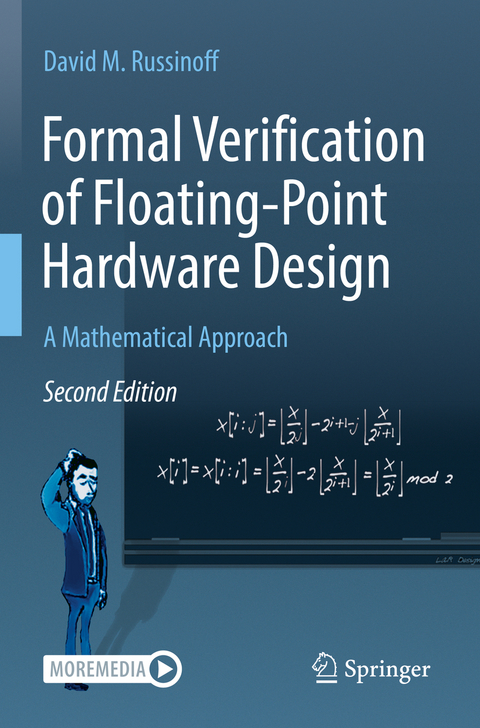
Formal Verification of Floating-Point Hardware Design
Springer International Publishing (Verlag)
978-3-030-87183-3 (ISBN)
This is the first book to focus on the problem of ensuring the correctness of floating-point hardware designs through mathematical methods. Formal Verification of Floating-Point Hardware Design, Second Edition advances a verification methodology based on a unified theory of register-transfer logic and floating-point arithmetic that has been developed and applied to the formal verification of commercial floating-point units over the course of more than two decades, during which the author was employed by several major microprocessor design companies. The theory is extended to the analysis of several algorithms and optimization techniques that are commonly used in commercial implementations of elementary arithmetic operations.
As a basis for the formal verification of such implementations, high-level specifications of the basic arithmetic instructions of several major industry-standard floating-point architectures are presented, including all details pertaining to the handling of exceptional conditions. The methodology is illustrated in the comprehensive verification of a variety of state-of-the-art commercial floating-point designs developed by Arm Holdings.
This revised edition reflects the evolving microarchitectures and increasing sophistication of Arm processors, and the variation in the design goals of execution speed, hardware area requirements, and power consumption. Many new results have been added to Parts I-III (Register-Transfer Logic, Floating-Point Arithmetic, and Implementation of Elementary Operations), extending the theory and describing new techniques. These were derived as required in the verification of the new RTL designs described in Part V.David M. Russinoff is Senior Principal Engineer at Arm Holdings. He holds a bachelor's degree from the Massachusetts Institute of Technology and a doctorate from New York University, both in mathematics, and a master's in computer sciences from the University of Texas at Austin. He has spent twenty-five years developing mathematical methods of hardware verification, with an emphasis on interactive theorem proving, and applying them in the analysis of commercial designs, especially arithmetic circuits.
Part I - Register-Transfer Logic.- Basic Arithmetic Functions.- Bit Vectors.- Logical Operations.- Part II - Floating-Point Arithmetic.- Floating-Point Numbers.- Floating-Point Formats.- Rounding.- IEEE-Compliant Square Root.- Part III - Implementation of Elementary Operations.- Addition.- Multiplication.- SRT Division and Square Root.- FMA-Based Division.- Part IV - Comparative Architectures: SSE, x87, and Arm.- SSE Floating-Point Instructions.- x87 Instructions.- Arm Floating-Point.- Instructions.- Part V - Formal Verification of RTL Designs.- The RAC Modeling Language.- Double-Precision Multiplication and Scaling.- Double-Precision Addition and FMA.- Multi-Precision Radix-8 SRT Division.- 64-bit Integer Division.- Multi-Precision Radix-4 SRT Square Root.- Multi-Precision Radix-2 SRT Division.- Fused Multiply-Add of a Graphics Processor.
| Erscheinungsdatum | 07.03.2023 |
|---|---|
| Zusatzinfo | XXVIII, 436 p. 40 illus. |
| Verlagsort | Cham |
| Sprache | englisch |
| Maße | 155 x 235 mm |
| Gewicht | 697 g |
| Themenwelt | Mathematik / Informatik ► Informatik ► Theorie / Studium |
| Informatik ► Weitere Themen ► Hardware | |
| Technik ► Elektrotechnik / Energietechnik | |
| Schlagworte | Booth multiplication • Computer arithmetic • Floating-point arithmetic • floation-point specification • formal specification of arithmetic instructions • Formal Verification • interactive theorem proving • register-transfer logic • SRT division |
| ISBN-10 | 3-030-87183-5 / 3030871835 |
| ISBN-13 | 978-3-030-87183-3 / 9783030871833 |
| Zustand | Neuware |
| Haben Sie eine Frage zum Produkt? |
aus dem Bereich


